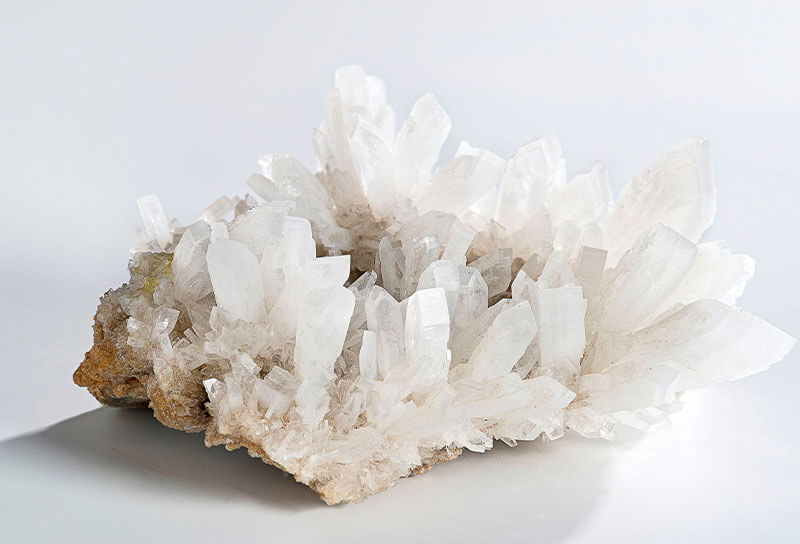Barite beneficiation and purification technology and research progress

Barite is often associated with minerals such as quartz, calcite, dolomite, fluorite, siderite, rhodochrosite, pyrite, galena and sphalerite. In deposits such as , silver and rare earth, barite is often a common gangue mineral. Therefore, the sorting process of barite is restricted by factors such as deposit type, mineral composition, and characteristics of barite and gangue phases.
At present, barite beneficiation and purification technologies mainly include hand separation, gravity separation, magnetic separation, flotation and combined processes.
1. Hand selection
The manual selection process is to manually select high-grade lump ore based on intuitive physical indicators such as the color and shape of the ore. It is suitable for selecting ores with high grade, simple composition and stable quality. Many small private mines in my country often use this method for sorting. For example, Pancun Mine, Xiangzhou, Guangxi, selects high-grade barite ore by hand selection process. The concentrate particle size is 30-150mm, and the barite grade can be as high as 95%. The process is simple and easy to implement, requires low mechanization of equipment, but has high labor intensity, low production efficiency, and serious waste of resources.
2. Re-election
Different minerals with large differences in density can be separated by gravity separation. The density of barite is 4.5g/cm3, which is much higher than other common gangue minerals (such as quartz 2.65g/cm3, calcite 2.6g/cm3). Therefore, the gravity separation process can be used to separate barite and gangue minerals. Select different gravity separation equipment according to the size of the ore grade. The coarse grade (-5+0.45mm) ore can use the jigging method, and the fine grade (-0.45mm) ore can use the shaking table or the spiral chute method.
This process has the advantages of simple equipment, good stability, no beneficiation agent, low cost, and less environmental pollution. Therefore, it is difficult to efficiently recover barite resources by a single gravity separation process, and it is necessary to further recover barite by combining magnetic separation or flotation processes.
3. Magnetic separation
When there is a significant difference in the magnetic properties of the minerals, the magnetic separation process can be used for separation. Barite is a non-magnetic mineral. When magnetic minerals (such as iron oxides) are the main gangue minerals, a magnetic separation process can be used to separate barite and gangue minerals. The resulting concentrate has a high BaSO4 content, which can be used as a requirement. Barite raw material for barium-based pharmaceuticals with very low iron content. Magnetic separation is often used to select pyrrhotite, magnetite, limonite and hematite.
4. Flotation
Flotation is an important way to deal with refractory barite resources such as low-grade ores, associated ores and tailings, and this process has good adaptability to various types of barite ores with complex inlays, and is also capable of recovering fine-grained weight. Effective way of spar. The flotation process generally includes positive flotation and reverse flotation.
5. Combined process
For associated ores, flotation tailings, and refractory ores with fine-grained mineral inlays, the recovery of barite by a single gravity or magnetic separation process is not satisfactory, and a combined process is required to efficiently recover barite. Common combined processes are: flotation-reelection, gravity-magnetic separation, magnetic separation-flotation and magnetic separation-re-election-flotation.
